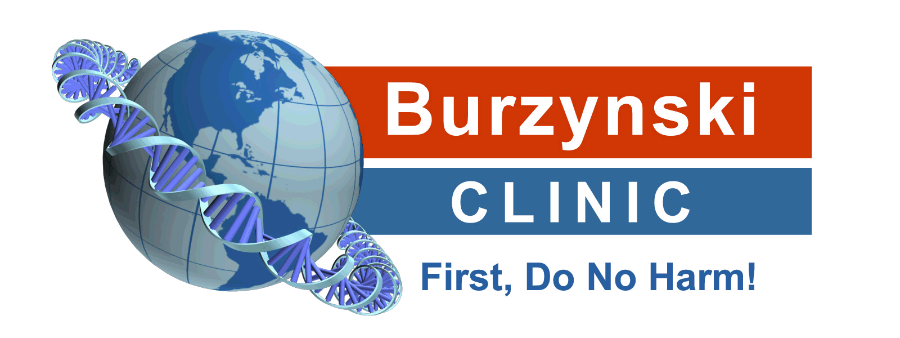11.8-Year Survival in Infant Brain Tumor Case with Antineoplaston Therapy | Burzynski Clinic
Friday, August 15, 2025 | By: Burzynski Clinic
Did you know that even in the toughest situations, hope can shine through? A ten-month-old girl diagnosed with a recurrent brain tumor beat the odds and lived for over 11.8 years, thanks to groundbreaking treatments. In this blog, we share her inspiring story and dive into how Antineoplaston Therapy is changing the game in pediatric oncology. Get ready to learn about a treatment that could make a big difference for children facing rare and aggressive brain tumors.
Understanding Pediatric Brain Tumors
Pediatric brain tumors represent a complex challenge for healthcare professionals and families alike, often diagnosed during a critical time in a child’s development. Among the various types of brain tumors affecting infants and children, desmoplastic infantile ganglioglioma (DIG) is noteworthy for its aggressive nature and challenging prognosis.
What Is Desmoplastic Infantile Ganglioglioma?
DIG is a rare type of brain tumor that usually occurs in infants and young children. It is characterized by its distinctive histological features and can comprise both glial and neuronal components. This type of lesion often manifests in the form of a visible mass in the brain, which can lead to increased intracranial pressure, neurological deficits, and, in some cases, seizures.
The Struggles Families Face
A diagnosis of pediatric brain tumors can be overwhelming for families. The emotional turmoil, treatment decisions, and uncertainty surrounding survival rates create immense pressure. Standard treatment options often include surgery, radiation, and chemotherapy, all of which may carry significant side effects and long-term implications for a child’s health and development.
The Role of Antineoplaston Therapy
Among the various treatments explored for aggressive brain tumors, Antineoplaston Therapy, developed by Dr. Stanislaw Burzynski, presents a novel approach. This treatment utilizes a combination of peptides and amino acid derivatives intended to combat cancer without the toxic effects associated with conventional therapies.
In a Phase II clinical study, Antineoplaston Therapy was applied to treat a ten-month-old girl diagnosed with recurrent DIG. The goal was to assess not only the efficacy and safety of the treatment but also to measure its potential for long-term survival.
The Treatment Journey
- Initial Diagnosis: The journey began when the girl exhibited symptoms leading to imaging studies that revealed the growth of a tumor in the brain. After a thorough analysis of her condition, the family was given several treatment options, but the prognosis remained guarded due to the aggressiveness of her diagnosis.
- Introduction to Antineoplastons: The family sought alternative treatment approaches and learned about Antineoplaston Therapy. After discussing the potential benefits and risks with the clincal team at Burzynski Clinic in Houston, TX, they decided to enroll in the clinical trial.
- Treatment Experience: The therapy commenced, and the young patient received tailored doses of Antineoplastons A10 and AS2-1. The treatment plan included regular monitoring to assess her response and adjust dosages as needed. This concierge-level care provided the family with peace of mind and access to 24-hour support services throughout the treatment cycle.
- Monitoring and Assessment: A series of follow-ups, imaging tests, and clinical evaluations were conducted to gauge the tumor's response. Remarkably, within a few months, the child showed signs of improvement, leading to a partial response to the therapy.
Achieving Long-Term Survival
What sets this case apart is the extraordinary outcome: not only did the patient respond positively to the treatment, but she also achieved a remarkable 11.8 years of survival. This long-term success challenges many conventional beliefs surrounding pediatric brain tumors and opens new doors for families facing similar diagnoses.
The importance of this success cannot be understated. It offers hope not only for the patient and her family but also for countless others who may be facing the fear of pediatric brain tumors.
Insights and Implications
The journey of this young girl illustrates the significance of personalized cancer treatment plans. By focusing on the individual needs of the patient and utilizing non-toxic therapies, there is potential for more favorable outcomes in pediatric oncology. This case serves as a pioneering example, encouraging ongoing research into less conventional methods that could offer new hope to families.
Advocacy for Innovation in Cancer Care
This breakthrough emphasizes the need for innovations in cancer care, particularly for children. Families should be empowered with knowledge about alternative therapies and encouraged to seek comprehensive support throughout the treatment journey.
Where Do We Go From Here?
As we look forward, the implications of this groundbreaking case invite further exploration into the potential of Antineoplastons and other non-toxic therapies in oncology. Continued research and advocacy can catalyze critical dialogues about how we approach cancer treatment, particularly in vulnerable populations such as infants and children.
The Promise of Hope:
This young girl’s remarkable recovery highlights how innovative treatments like Antineoplaston Therapy can bring new hope to families facing pediatric brain tumors. If you or a loved one is navigating a similar diagnosis, exploring personalized, non-toxic treatment options may make all the difference. To learn more about your options, reach out to the Burzynski Clinic in Houston, TX to schedule a consultation with Dr. Stanislaw Burzynski and explore a personalized approach to treatment.

